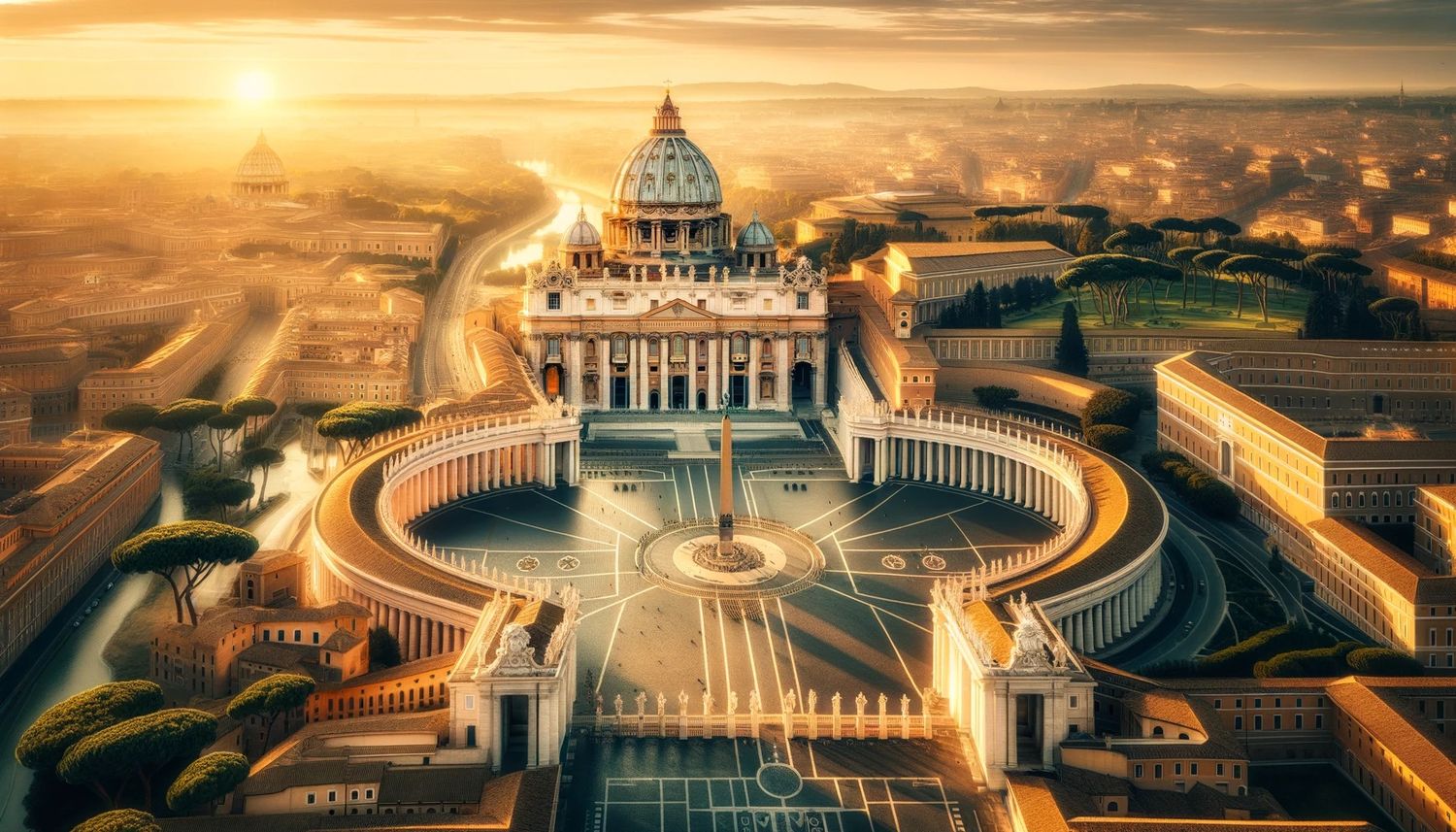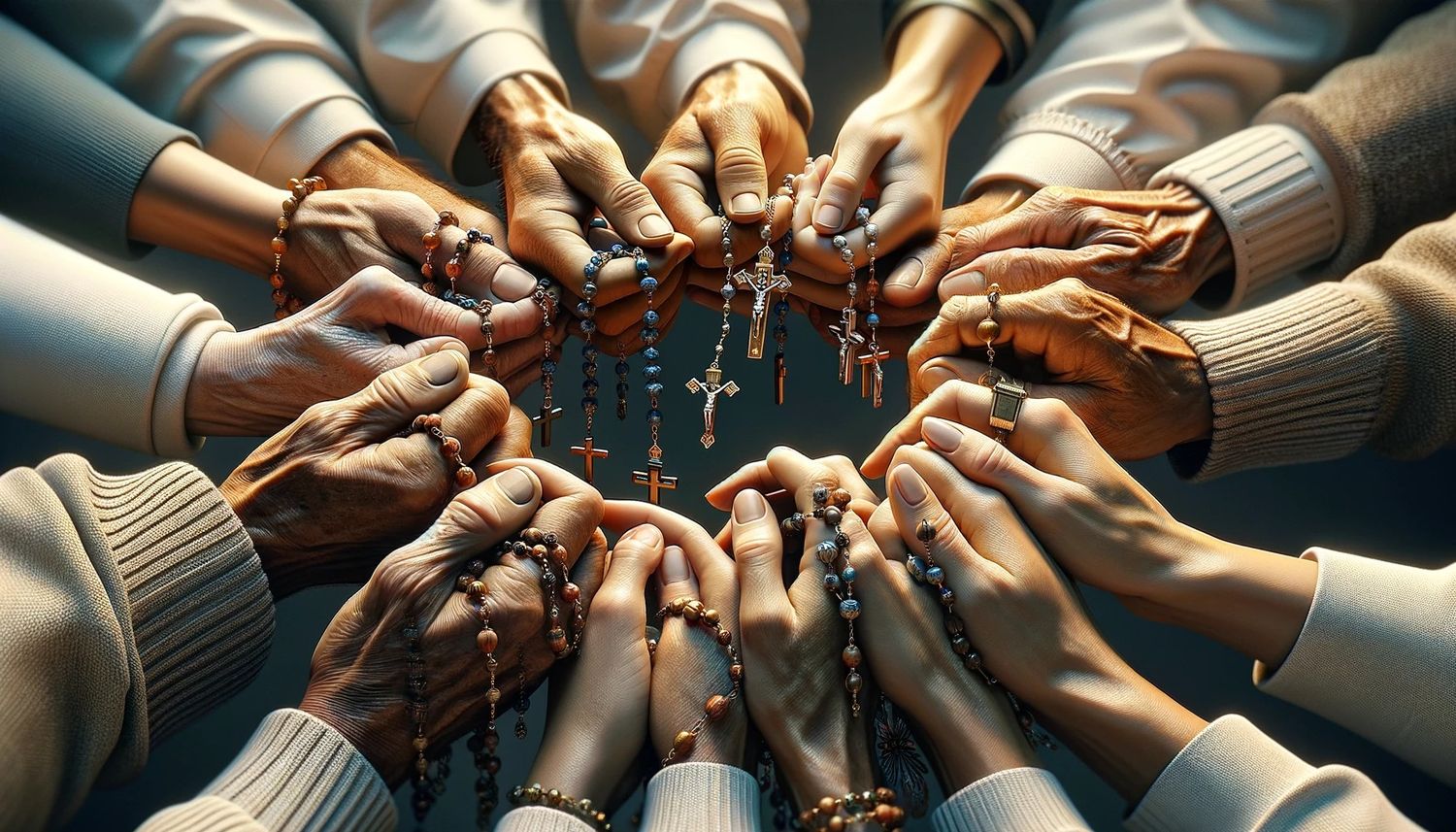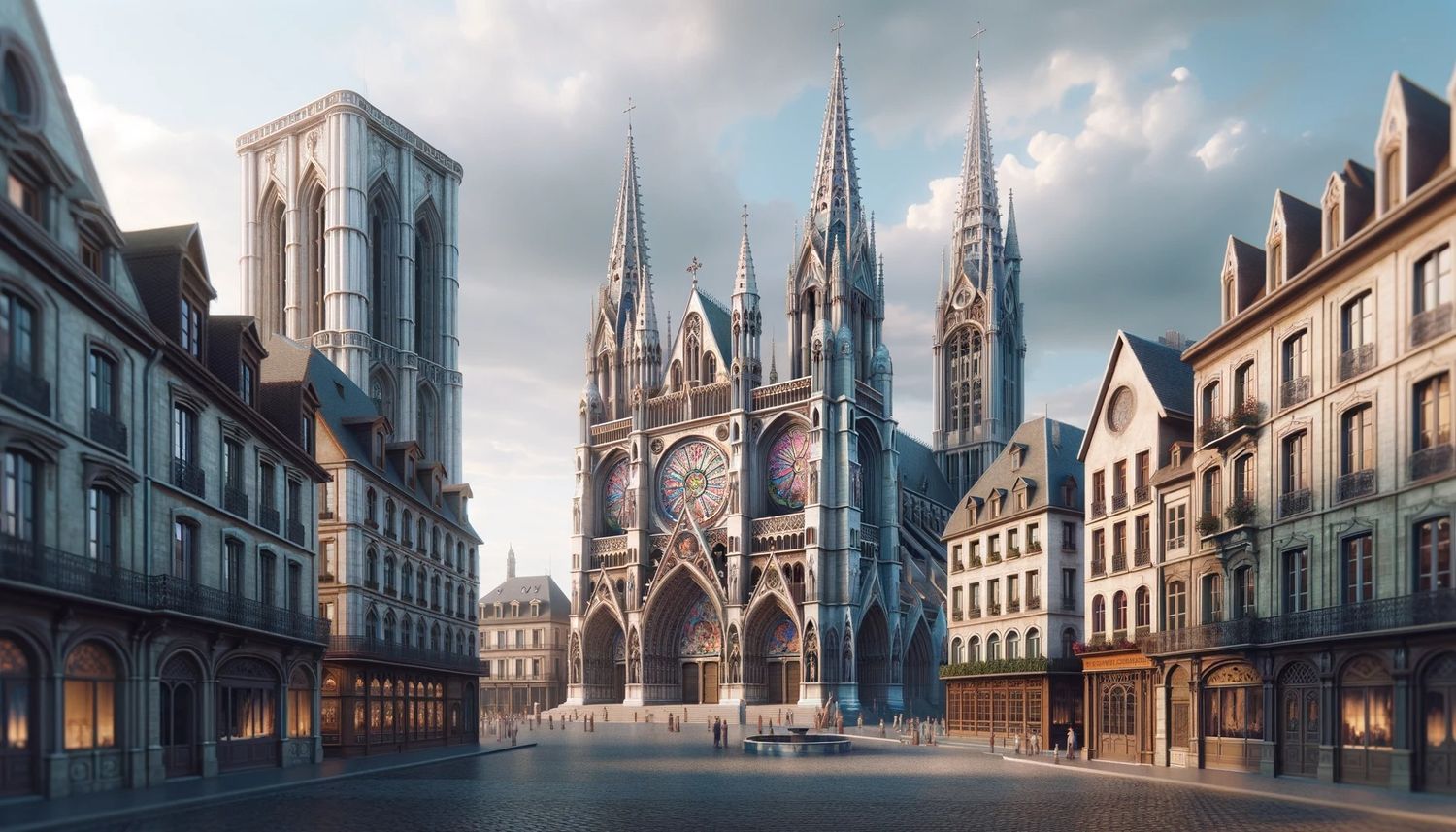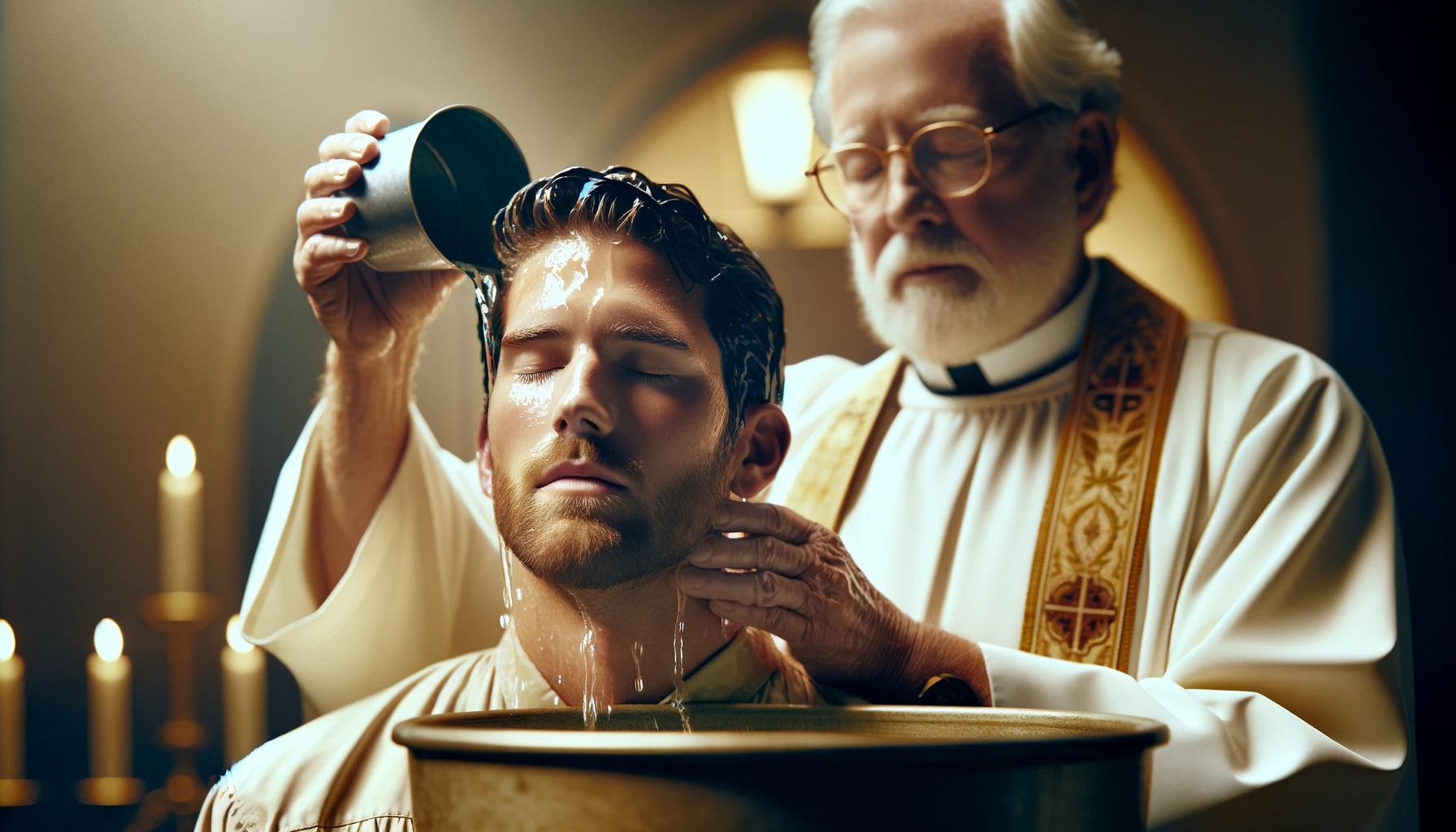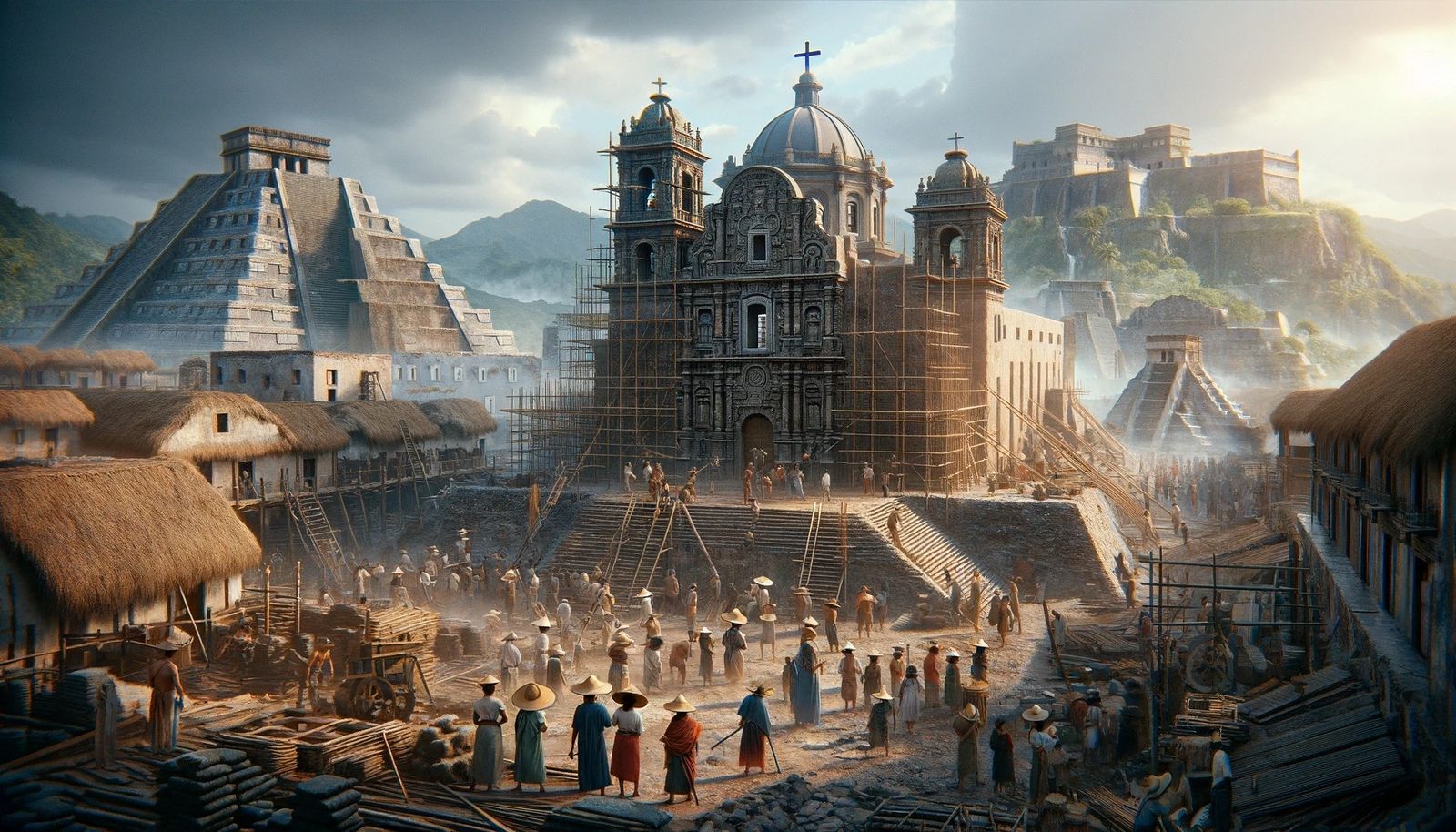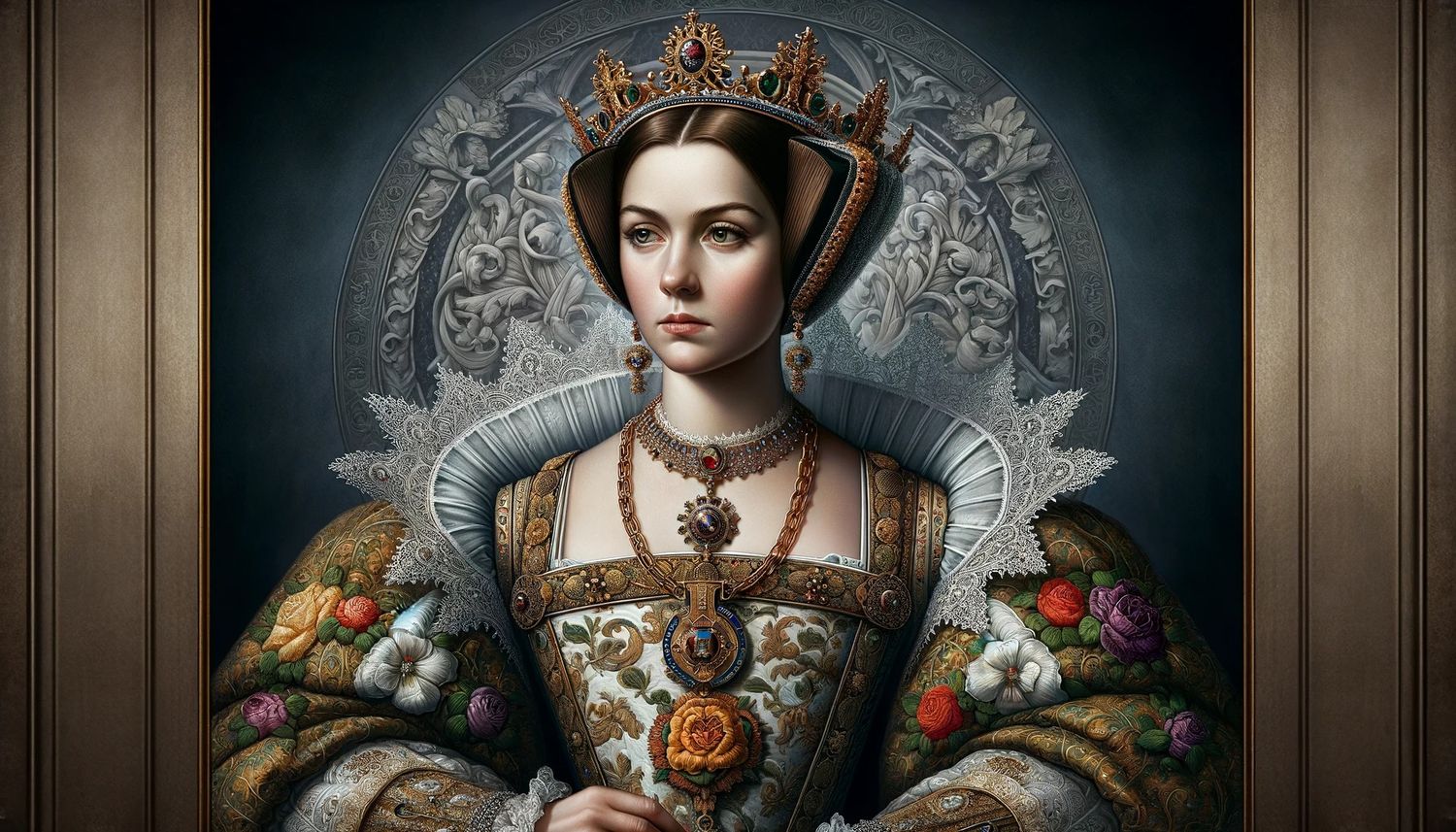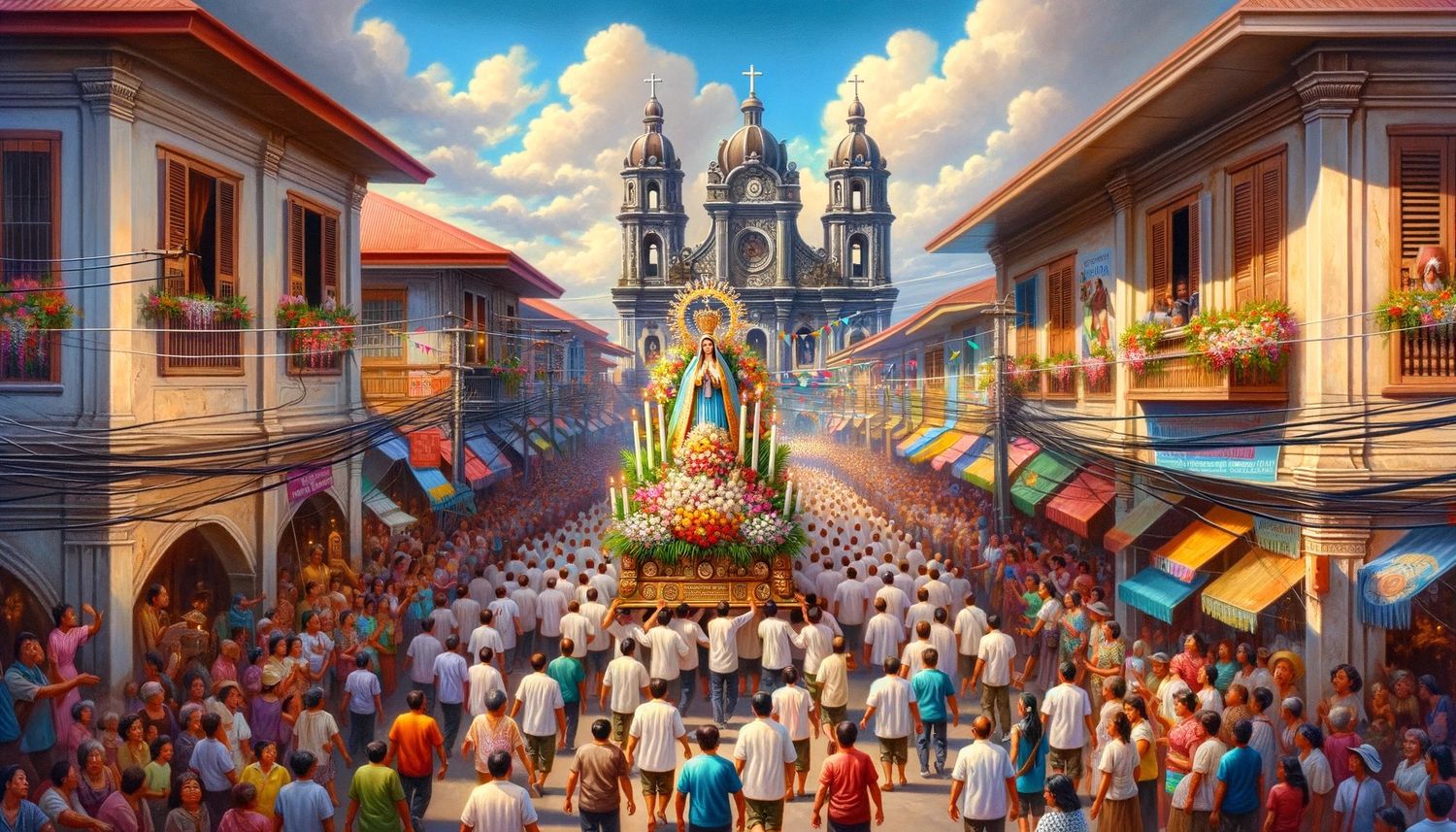Home>Theology and Spirituality>What Happened Once The Visigoths Converted To Roman Catholicism
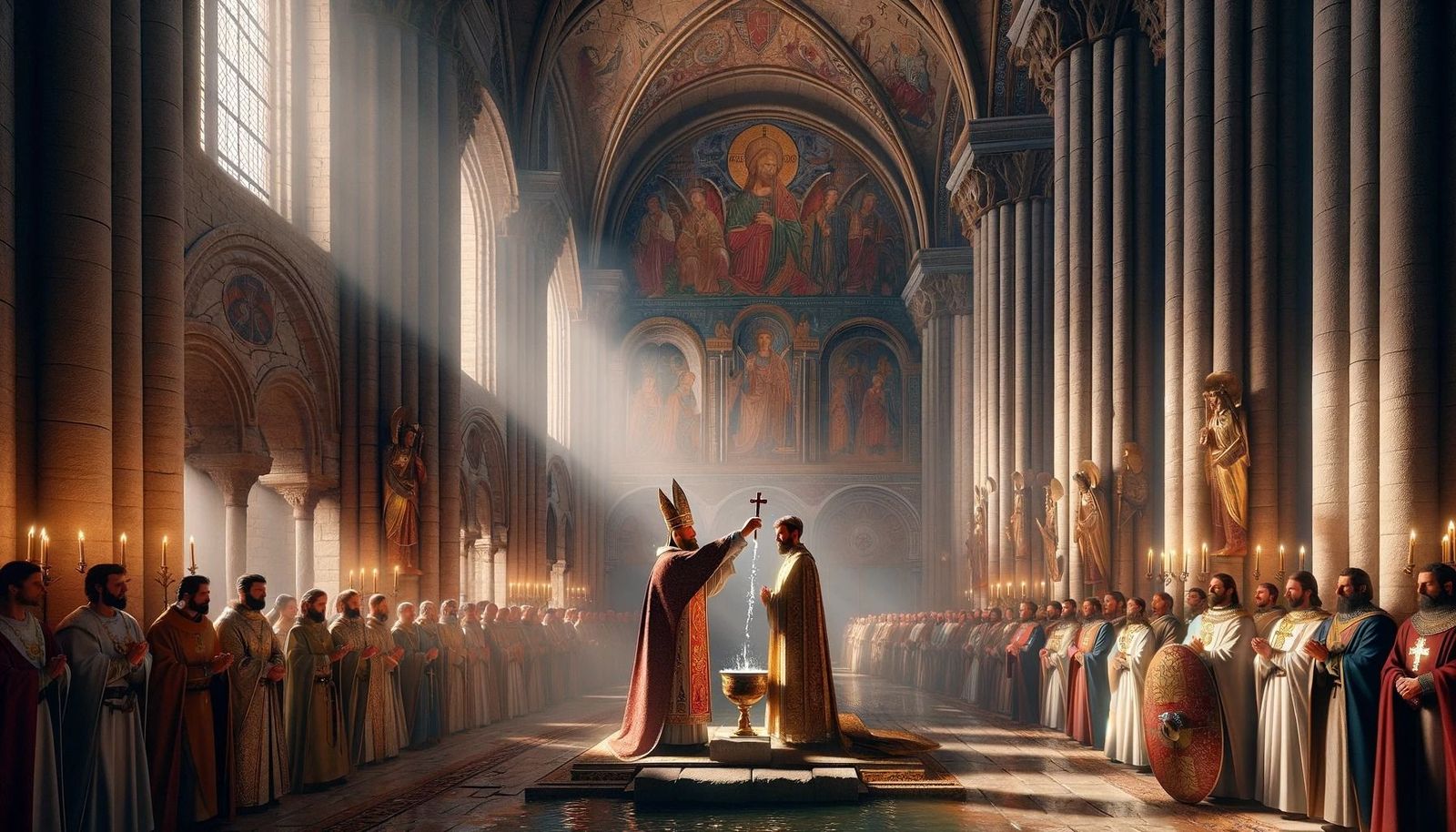

Theology and Spirituality
What Happened Once The Visigoths Converted To Roman Catholicism
Published: February 15, 2024
Jason DeRose, Managing Editor at Christian.net, uses his expertise in religion and journalism to deepen understanding of faith's societal impacts. His editorial leadership, coupled with a strong academic background, enriches the platform’s diverse content, earning him recognition in both journalism and religious circles.
Discover the impact of the Visigoths' conversion to Roman Catholicism on theology and spirituality. Explore the historical significance and lasting effects of this pivotal religious transformation.
(Many of the links in this article redirect to a specific reviewed product. Your purchase of these products through affiliate links helps to generate commission for Christian.net, at no extra cost. Learn more)
Table of Contents
Introduction
The conversion of the Visigoths to Roman Catholicism marked a pivotal moment in the history of Europe and the evolution of Christianity. This significant event, which took place in the late 6th century, not only transformed the religious landscape of the Visigothic Kingdom but also had far-reaching implications for its society, culture, and relations with the Roman Empire.
The Visigoths, a Germanic tribe known for their fierce warrior culture and migration across Europe, had initially adhered to Arian Christianity, a theological belief that diverged from the Nicene Creed. However, the conversion to Roman Catholicism represented a profound shift in their religious identity and affiliations. This momentous transition was not merely a matter of theological doctrine but also a reflection of the complex political and cultural dynamics of the time.
As we delve into the details of this historic conversion, it becomes evident that the repercussions extended beyond matters of faith. The embrace of Roman Catholicism by the Visigothic leadership and populace had a profound impact on the kingdom's governance, legal system, and social structures. Furthermore, it reshaped the interactions between the Visigoths and the Roman Empire, influencing diplomatic relations and the broader geopolitical landscape of the era.
In exploring the multifaceted dimensions of this conversion, we gain insight into the intricate interplay of religion, power, and identity. The narrative of the Visigoths' embrace of Roman Catholicism unfolds as a compelling saga that illuminates the complexities of historical transformation and the enduring legacy of religious change. As we embark on this exploration, we will uncover the profound implications of this pivotal moment in European history and its enduring significance in shaping the cultural and religious tapestry of the continent.
Read more: What Is Roman Catholicism About
The Conversion of the Visigoths to Roman Catholicism
The conversion of the Visigoths to Roman Catholicism stands as a watershed moment in the annals of European history, marking a profound shift in the religious allegiance of this formidable Germanic tribe. Prior to their embrace of Roman Catholicism, the Visigoths had adhered to Arian Christianity, a theological stance that diverged from the Nicene Creed and had been a defining feature of their religious identity. However, the winds of change swept through the Visigothic Kingdom in the late 6th century, catalyzing a transformation that reverberated across the realms of faith, politics, and culture.
The catalyst for this momentous conversion can be traced to the reign of King Reccared I, a visionary monarch who recognized the strategic advantages of aligning the Visigothic realm with the religious and political power of the Roman Catholic Church. Under his astute leadership, a series of ecclesiastical councils were convened, culminating in the historic Third Council of Toledo in 589. It was within the hallowed halls of this council that King Reccared I, along with the Visigothic nobility and clergy, formally renounced Arianism and professed adherence to Roman Catholicism.
This seismic shift in religious allegiance was not merely a matter of doctrinal realignment; it carried profound implications for the Visigothic Kingdom's internal dynamics and external relations. The conversion to Roman Catholicism served as a unifying force, bridging theological divides within the realm and fostering a sense of cohesion and solidarity among the Visigothic populace. Moreover, it positioned the kingdom within the broader framework of Catholic Christendom, forging ties with the papacy and the influential ecclesiastical hierarchy of the Roman Empire.
The conversion also bore the imprint of political astuteness, as it enabled the Visigothic monarchy to consolidate its authority and legitimacy by aligning with the spiritual authority of the Roman Catholic Church. This strategic maneuver bolstered the monarchy's standing and engendered a sense of divine sanction for its rule, thereby fortifying the realm's political stability and internal coherence.
In essence, the conversion of the Visigoths to Roman Catholicism transcended the realm of religious doctrine, permeating the fabric of Visigothic society and governance with enduring ramifications. It heralded a new chapter in the kingdom's history, one characterized by a symbiotic relationship between the throne and the Church, and positioned the Visigoths within the broader tapestry of medieval Christendom.
This pivotal conversion not only reshaped the religious landscape of the Visigothic Kingdom but also reverberated across the corridors of power in the medieval world, leaving an indelible mark on the annals of European history.
Impact on Visigothic Society and Culture
The conversion of the Visigoths to Roman Catholicism exerted a profound and multifaceted impact on the societal and cultural fabric of their kingdom. This seismic shift in religious allegiance rippled through every stratum of Visigothic society, leaving an indelible imprint on its norms, customs, and collective identity.
One of the most palpable effects of this conversion was the consolidation of religious unity within the Visigothic realm. The adoption of Roman Catholicism served as a unifying force, transcending the previously entrenched divisions between Arian and Catholic adherents. This newfound religious cohesion engendered a sense of collective identity and solidarity among the Visigothic populace, fostering a shared framework of beliefs and rituals that permeated the social tapestry of the kingdom.
Moreover, the embrace of Roman Catholicism catalyzed a reconfiguration of cultural practices and expressions within Visigothic society. The rituals, liturgies, and iconography associated with Roman Catholicism infused the cultural milieu with a distinct religious aesthetic, shaping artistic endeavors, architectural endeavors, and the commemoration of communal festivities. The visual and performative dimensions of Roman Catholic worship became intertwined with the artistic and cultural expressions of the Visigoths, leaving an enduring legacy on the material and intangible heritage of the kingdom.
Furthermore, the conversion to Roman Catholicism engendered a reorientation of social mores and ethical norms within Visigothic society. The ethical precepts and moral imperatives espoused by Roman Catholic doctrine permeated the collective consciousness, influencing interpersonal conduct, familial dynamics, and the broader ethical framework of the kingdom. This ethical realignment, underpinned by Roman Catholic teachings, contributed to the cultivation of a shared moral compass that guided the actions and interactions of the Visigothic populace.
In addition, the conversion to Roman Catholicism precipitated a transformation in the realm of education and intellectual pursuits within Visigothic society. The patronage of Roman Catholic institutions and the dissemination of Catholic teachings fostered a climate conducive to scholarly endeavors, theological inquiry, and the preservation of knowledge. This intellectual renaissance, propelled by the infusion of Roman Catholic thought, engendered a flourishing of learning and cultural exchange within the Visigothic Kingdom, leaving an enduring legacy on the intellectual heritage of the realm.
In essence, the impact of the Visigoths' conversion to Roman Catholicism reverberated across the societal and cultural landscape, permeating the ethos, expressions, and intellectual currents of their kingdom with the enduring influence of Roman Catholicism. This transformative shift left an indelible mark on the collective identity and cultural legacy of the Visigoths, shaping the contours of their society and cultural heritage for generations to come.
Relations with the Roman Empire
The conversion of the Visigoths to Roman Catholicism heralded a pivotal juncture in their relations with the Roman Empire, engendering a complex interplay of diplomatic, religious, and geopolitical dynamics. Prior to their embrace of Roman Catholicism, the Visigoths had been perceived as religious and political outliers by the Roman Empire, owing to their adherence to Arian Christianity and their incursions into Roman territories. However, the conversion precipitated a recalibration of their relations with the Roman Empire, fostering a convergence of interests and a reconfiguration of their geopolitical positioning.
The adoption of Roman Catholicism by the Visigoths served as a catalyst for the normalization of their relations with the Roman Empire. By aligning with the theological framework espoused by the Roman Catholic Church, the Visigoths sought to bridge the religious schism that had hitherto estranged them from the Roman Empire. This strategic maneuver not only facilitated a rapprochement between the two powers but also engendered a sense of religious and cultural affinity, laying the groundwork for a more amicable and collaborative relationship.
Furthermore, the conversion to Roman Catholicism facilitated a redefinition of the Visigoths' geopolitical standing vis-à-vis the Roman Empire. The alignment with Roman Catholicism positioned the Visigothic Kingdom within the broader framework of Catholic Christendom, forging ties with the papacy and the influential ecclesiastical hierarchy of the Roman Empire. This ecclesiastical entente not only bolstered the legitimacy of the Visigothic monarchy in the eyes of the Roman Empire but also engendered a sense of shared religious identity and purpose, fostering a climate conducive to diplomatic overtures and strategic collaboration.
Moreover, the conversion to Roman Catholicism served as a catalyst for the consolidation of political and military alliances between the Visigoths and the Roman Empire. The shared religious allegiance provided a common ground for diplomatic negotiations and military cooperation, enabling the two powers to navigate shared challenges and confront common adversaries. This collaborative synergy, underpinned by their mutual embrace of Roman Catholicism, engendered a climate of strategic alignment and mutual support, reshaping the geopolitical calculus of the era.
In essence, the conversion of the Visigoths to Roman Catholicism precipitated a profound reconfiguration of their relations with the Roman Empire, fostering a convergence of interests, a redefinition of their geopolitical positioning, and a climate of collaborative synergy. This transformative shift not only normalized their diplomatic and military interactions but also engendered a sense of shared religious and cultural affinity, leaving an indelible imprint on the annals of medieval European history.
The Visigothic Church and Religious Practices
The conversion of the Visigoths to Roman Catholicism ushered in a transformative era for the Visigothic Church and the religious practices that permeated the kingdom. This pivotal shift in religious allegiance engendered a reconfiguration of ecclesiastical structures, theological discourse, and religious rituals, shaping the contours of religious life within the Visigothic Kingdom.
The embrace of Roman Catholicism precipitated a reorganization of the ecclesiastical hierarchy, as the Visigothic Church sought to align itself with the institutional framework of the Roman Catholic Church. This realignment entailed the establishment of episcopal sees, the appointment of bishops, and the consolidation of ecclesiastical authority under the aegis of Roman Catholic doctrine. The hierarchical structure of the Visigothic Church mirrored the ecclesiastical framework of the Roman Empire, fostering a sense of institutional continuity and doctrinal coherence.
Moreover, the conversion to Roman Catholicism catalyzed a renaissance of religious practices and devotional expressions within the Visigothic Kingdom. The rituals, liturgies, and sacramental observances associated with Roman Catholicism permeated the religious landscape, shaping the spiritual ethos of the Visigothic populace. The celebration of the Mass, the veneration of saints, and the observance of religious festivals became integral facets of religious life, imbuing the kingdom with a distinctively Roman Catholic religious aesthetic.
Furthermore, the embrace of Roman Catholicism engendered a reconfiguration of theological discourse and doctrinal formulations within the Visigothic Church. The teachings of Roman Catholic theologians, the articulation of orthodox dogma, and the dissemination of canonical decrees exerted a formative influence on the theological currents that coursed through the kingdom. This doctrinal convergence with Roman Catholicism facilitated a harmonization of theological perspectives and engendered a climate conducive to doctrinal unity and orthodoxy.
In essence, the conversion of the Visigoths to Roman Catholicism precipitated a renaissance of religious life within the kingdom, fostering a convergence of ecclesiastical structures, devotional practices, and theological discourse with the institutional and doctrinal framework of the Roman Catholic Church. This transformative shift left an indelible imprint on the religious identity and spiritual ethos of the Visigothic Kingdom, shaping the contours of religious life and ecclesiastical governance for generations to come.
Read more: How To Convert A Muslim To Catholicism
Legacy of the Visigothic Conversion to Roman Catholicism
The legacy of the Visigothic conversion to Roman Catholicism reverberates across the annals of European history, leaving an indelible imprint on the cultural, religious, and geopolitical tapestry of the medieval era. This transformative shift, which unfolded in the late 6th century, engendered a legacy that transcended the confines of its temporal context, shaping the contours of European civilization and religious identity for centuries to come.
One of the enduring legacies of this conversion lies in its role as a catalyst for the consolidation of Roman Catholicism as the predominant religious force within the Visigothic Kingdom. The embrace of Roman Catholicism engendered a reconfiguration of religious identity and ecclesiastical structures, fostering a climate conducive to doctrinal unity and orthodoxy. This legacy of religious cohesion and institutional continuity permeated the religious landscape of the kingdom, leaving an enduring imprint on the religious identity and spiritual ethos of the Visigothic populace.
Furthermore, the legacy of the Visigothic conversion to Roman Catholicism is manifested in its role as a catalyst for the normalization of relations between the Visigoths and the Roman Empire. The alignment with Roman Catholicism facilitated a convergence of interests and a redefinition of geopolitical positioning, fostering a climate of diplomatic overtures and strategic collaboration. This legacy of diplomatic normalization and strategic alignment reshaped the geopolitical calculus of the era, leaving an indelible mark on the annals of medieval European history.
Moreover, the legacy of this conversion endures in its role as a transformative force that shaped the cultural and artistic expressions of the Visigothic Kingdom. The infusion of Roman Catholic rituals, iconography, and liturgical practices permeated the cultural milieu, shaping artistic endeavors, architectural expressions, and the commemoration of communal festivities. This legacy of cultural renaissance and religious aesthetic left an indelible imprint on the material and intangible heritage of the kingdom, shaping the contours of its cultural legacy for generations to come.
In essence, the legacy of the Visigothic conversion to Roman Catholicism transcends the confines of a singular historical event, permeating the fabric of European civilization with its enduring influence. This transformative shift engendered a legacy of religious cohesion, diplomatic normalization, and cultural renaissance, leaving an indelible imprint on the annals of European history and the enduring legacy of religious change.
